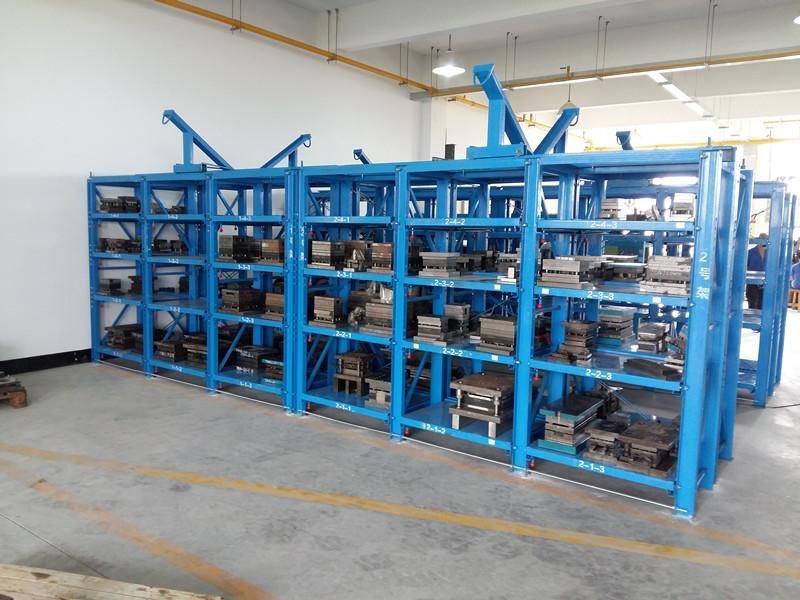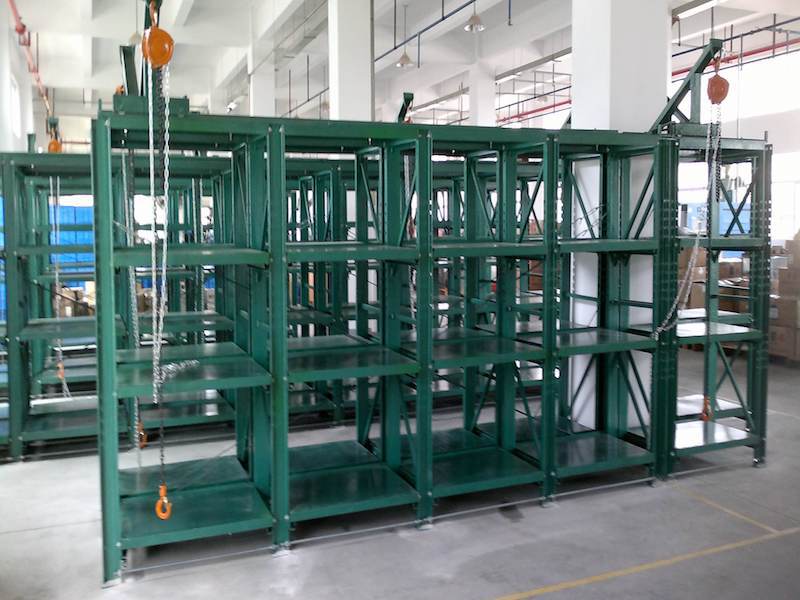If you’re in manufacturing, woodworking, or any industry that relies on molds, you know how critical it is to keep your workspace organized. Molds are expensive, delicate, and often bulky—so storing them properly isn’t just about neatness; it’s about protecting your investment. That’s where shelves for placing molds come into play. But not all shelves are created equal. Choosing the wrong type could lead to damaged molds, wasted space, or even safety hazards.
In this guide, we’ll break down everything you need to know before buying shelves for your molds. From material strength to customization options, we’ll cover the key factors to ensure you pick the best storage solution for your needs. Let’s dive in!
When shopping for shelves for placing molds, the first thing to consider is what they’re made of. Molds are heavy—especially industrial ones made of metal or reinforced plastics. Flimsy shelves might buckle under pressure, risking damage to your molds and creating safety issues.
Look for shelves constructed from steel or industrial-grade aluminum. These materials offer high weight capacity and resist warping over time. Powder-coated finishes are a bonus—they prevent rust and corrosion, which is crucial if your workspace deals with moisture or chemicals.
Avoid particleboard or cheap plastic shelving. They might save you money upfront, but they’ll cost you more in replacements (and headaches) down the line.

Ever heard the phrase “measure twice, cut once”? When it comes to shelves for placing molds, think “calculate twice, buy once.” Before hitting “add to cart,” figure out the total weight your shelves will need to hold. Add up the weight of your heaviest molds, and then add a 20% buffer for safety.
For example, if your molds weigh 800 lbs collectively, aim for shelves with a 1,000 lb capacity. Overloading shelves is a common mistake that leads to collapses—something you definitely want to avoid in a busy workspace.
Pro tip: Check if the weight rating applies to each shelf or the entire unit. This detail is easy to miss but super important!
Molds come in all shapes and sizes. A tall, narrow mold might need vertical space, while a wide, flat one requires deeper shelving. That’s why adjustable shelves are a game-changer for mold storage.
Look for shelves with:
Adjustability isn’t just about convenience—it future-proofs your investment. If your mold collection grows or changes, your shelves can adapt without requiring a full overhaul.
Before buying, grab a tape measure! Shelves for placing molds need to fit two things: your workspace and your molds.
Start by mapping out:
Deep shelves (24+ inches) work well for bulky molds, while narrow units are ideal for tight spaces. If ceiling space is limited, consider wall-mounted options to free up floor area.
A wobbly shelf isn’t just annoying—it’s dangerous. Heavy molds falling from height can cause injuries or damage equipment. Prioritize safety features like:
If your workspace uses forklifts or carts, opt for shelves with protective corner guards to avoid dings and dents during transport.
Molds often need to air-dry or cure after use. If that’s the case for your workflow, choose shelves for placing molds with open, ventilated designs. Wire shelving allows airflow, preventing moisture buildup that can warp molds or breed mold (yes, the irony is real).
Also, think about accessibility. Can you easily reach molds stored on higher shelves? Rolling shelves or units with pull-out trays might save you from awkward ladder climbs.

Let’s talk money. Cheap shelves might seem like a win for your budget, but they rarely last in industrial settings. Instead, focus on long-term value. High-quality shelves for placing molds cost more upfront but save you money by:
Compare warranties, too. Reputable brands often offer 5–10-year warranties, signaling confidence in their product’s durability.
Every workspace is unique. Maybe you need shelves with integrated lighting for detailed mold inspections. Or perhaps you require shelves on casters to move molds between stations. Whatever your needs, seek out brands that offer customizable shelving solutions.
Add-ons to consider:
Don’t skip the research phase! Check customer reviews for real-world insights. Look for feedback from users in similar industries—e.g., “These shelves hold my 200 lb injection molds perfectly!”
If possible, test the shelves yourself. Some suppliers offer samples or in-person demos. Put them through the paces: shake them, load them with weight, and see how they hold up.
Sustainability isn’t just a buzzword—it’s good business. Many companies now offer recycled steel shelves or units designed for disassembly and recycling. Going green can align with your brand values and even qualify you for tax incentives in some states.
Choosing the right shelves for placing molds isn’t a decision to rush. Take the time to assess your needs, compare options, and invest in a solution that protects your molds and boosts your productivity. Whether you’re storing ceramic casts, metal dies, or silicone prototypes, the right shelving can make all the difference.
 Wechat
Wechat
 Whatsapp
Whatsapp